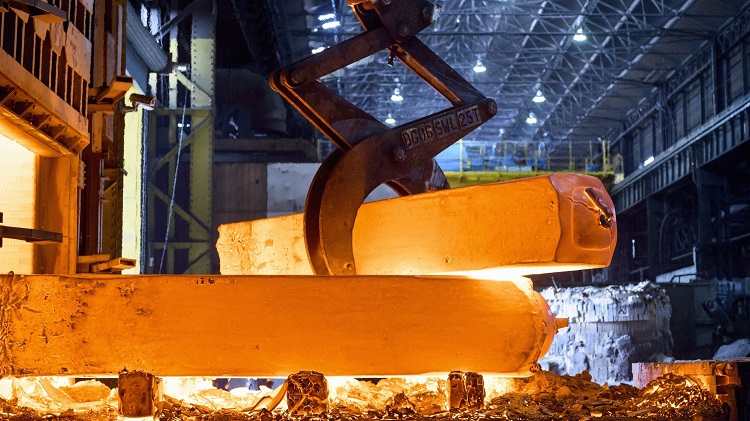As companies address their role in mitigating environmental impacts, one thing is very clear. A more sustainable world needs the industrial world to build more sustainable operations.
The good news is that for heavy industry, sustainability has been on the forefront for years. Adopting environmentally sound practices helps conserve energy, reduce waste, and minimize regulatory costs, which is good for business, too — “doing well by doing good.” Asset management and reliability play a key role. That’s why the smartest asset management professionals have long aligned their operational metrics to reduce cost and waste and boost efficiency, all of which are critical to a sustainability strategy.
The age-old strategy of reduce, recycle and reuse still holds the key to improving the environment and the sustainability of industrial businesses, consider the impacts.
◉ Industrial businesses leverage and produce assets, and both have the potential for waste. It is estimated that 80% of the materials leveraged and created by manufacturers end up as waste that directly and indirectly impacts the environment. How can we reduce this impact?
◉ Consider that humans produce over 100 billion tons of material every year, but only 13% is recycled at a global level, and you realize that controlling assets, inventories and materials from cradle to grave is a critical aspect to building a sustainable future.
◉ Imagine if the world recaptured more of that 100 billion tons of material it creates and devised innovative ways to put it back into use. In the asset management world, reuse focuses on physical and digital materials that lessen energy costs and waste, as well as ways to put assets and materials back in play.
We looked back on thirty years of partnering with some of the most industrialized businesses on the planet to share ways that IBM Maximo users reduce, recycle and reuse their physical and digital assets and knowledge. Today we’ll spotlight 20 ways to help build more sustainable operations — and a better world — simply by doing a good job.
Tips to extend your asset life and reduce material impacts
1. Reduce the number of assets sent to landfill by using condition-based maintenance and remote monitoring to keep every asset in peak condition
2. Reduce unplanned downtime and unnecessary space utilization by maintaining the optimal inventories with MRO inventory optimization
3. Extend the lifecycle of assets by reducing performance issues that drive early replacement
4. Develop and track asset hierarchies and component-level detail to reuse parts from assets scheduled for disposition that could be reused in other assets
5. Improve daily performance with condition-optimized preventive maintenance scheduling
6. Tackle the lifecycle holistically with support for standards like ISO 14040 that support a full assessment of the impacts from deploying assets and products
7. Model disposition from the beginning to balance accounting with production value and future environmental impacts (and potential costs)
Tips to reduce energy and effort in your workforce
1. Reduce unneeded labor and improve wrench time with a focus on criticality of assets
2. Reduce required rolls with optimized scheduling to bundle maintenance jobs and inspections
3. Reduce in-house infrastructure with cloud-based solutions hosted outside the company datacenter
4. Recycle critical field skills with centralized functions for monitoring and peer guidance
5. Recycle logs and records (including video, documents, etc.) and use AI to identify the highest probability approaches that drive the right outcomes, and improve job plans
6. Reuse best-practice data, processes and real-time peer interactions (live video chats) to support just-in-time repair guidance and create virtual training material for new technicians that drive first-time-fix rates up
7. Reuse the knowledge of your industry with best-in-class data model, job plans, industry solutions
8. Engage in sharing and harvesting best practices in communities like the IBM Maximo community and user groups
Tips to reduce the use of harmful pollutants
1. Reduce overall fuel consumption/mileage with route optimization and mobile tools that give technicians the asset information they need, no matter where they are
2. Reduce costly and unnecessary environmental impacts with Environment, Health and Safety (EHS) tools that monitor and ensure compliance regulations
3. Reduce the use of chemical lubricants and standardize on less-harsh options that last longer
4. Have detailed data on all recyclable materials used in maintenance, and a disposition plan embedded in job plans
5. Track and identify alternate uses for lubricants and materials (even with other vendors) to ensure every ounce of utility is derived from supporting materials
By adopting and executing these 20 process suggestions that consider environmental impact while also creating value for the employees, shareholders, customers and the communities in which they operate, your business can deliver more sustainable operations and a healthier planet.
More resources for your sustainability journey
From reducing the complexity of compliance and reporting, to minimizing your overall environmental impact while also lowering cost, IBM is uniquely positioned to help. Schedule time to talk with one of our experts about how you can better measure, monitor, and predict your organization’s environmental footprint, accelerate your sustainability actions and drive real results.
Listen to the webinar “Doing well by doing good: why sustainable operations are good for everyone.” It’s a thoughtful discussion with global research firm, IDC and IBM on the role of sustainability in asset-intensive operations.
Explore the IBM Maximo Application Suite and discover how Maximo can create a more sustainable manufacturing operation.
Read more on the topic of sustainability and the role of technology in helping companies reduce their impact on the planet. Reports include Sustainability as a business strategy and The rise of the sustainable enterprise.
Source: ibm.com





0 comments:
Post a Comment